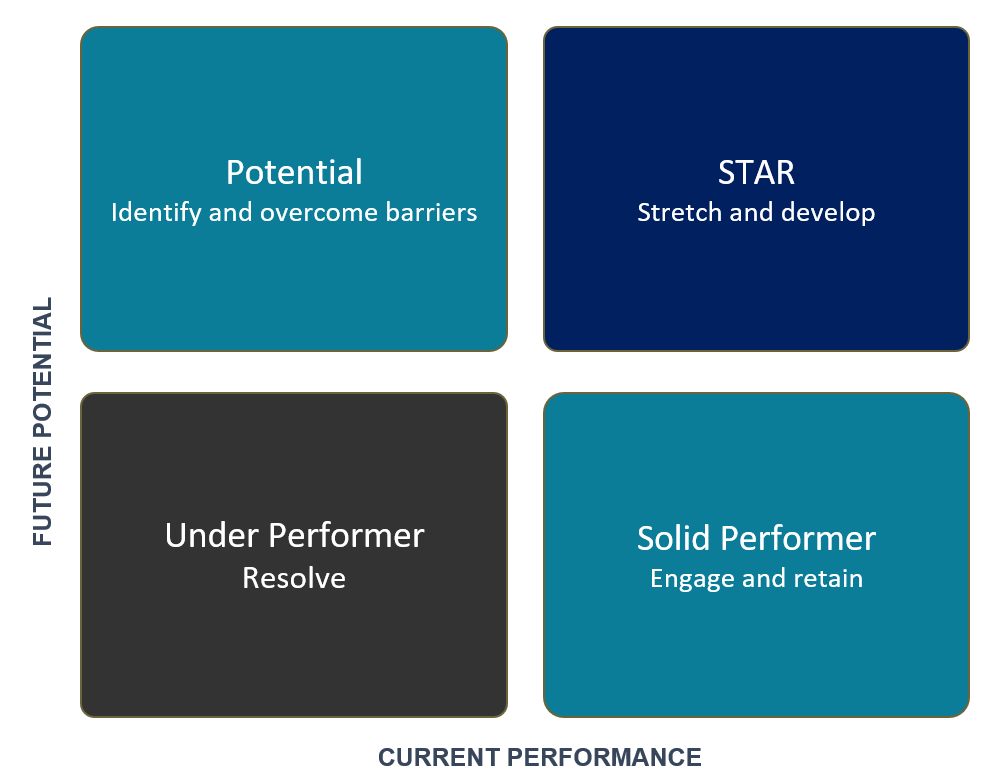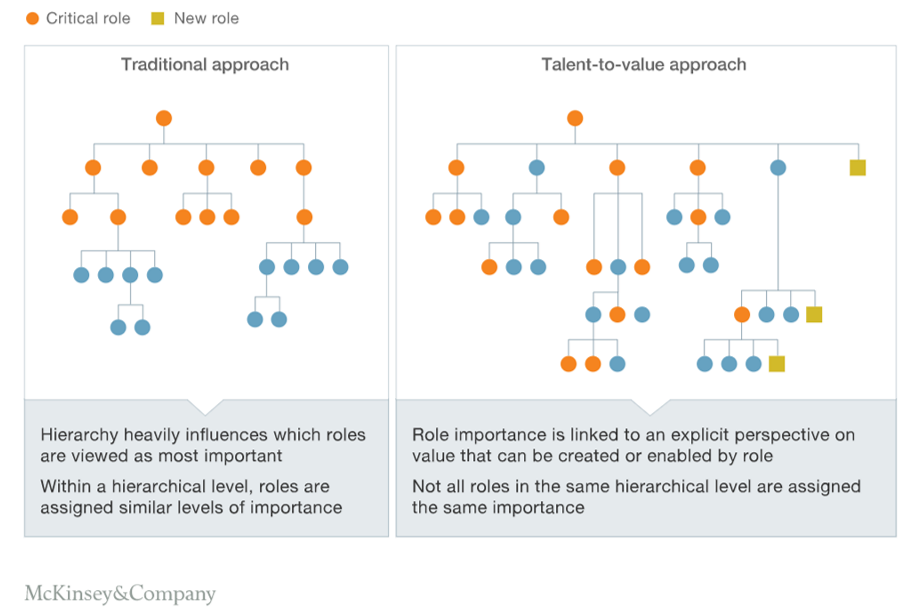Three Steps To Stay Ahead In The War For Talent
In this article:
- Emerging talent trends in 2021
- Three steps the best organisations are taking to respond
- A strategic, 360 view of talent transition, redeployment and development
It might seem that with the economic impacts of pandemic-related lockdowns, the war for talent might not be at the top of the agenda for organisations. However, after more than 200 client interviews over the past few months, the shortage of talent has emerged as the number one barrier to organisations achieving their strategic, commercial and operational objectives.
When we looked at the research, it was clear that the COVID situation has simply brought the talent crunch into sharp focus. The availability of talent started to tighten long before the pandemic, with the percentage of employers “having difficulty filling jobs” increasing over 10% each year from 2016 [Manpower 2021]. Many large employers we spoke with confirmed this, including a national retailer which has been planning for this since 2018.
We know that COVID has accelerated this in 2021 with the Australian Bureau of Statistics reporting that over 80% of medium to large businesses report an “inability to find suitable staff”, with the three main reasons being:
- International border closures
- Difficulty retaining staff, and
- COVID uncertainty.
While organisations can’t do a lot about the first and third factors, they can take steps to retain and develop talent. Our own research demonstrates that this is not only the best defence against the talent shortage, it is also the fastest and easiest way for organisations to adapt for the future.
TAKE THREE STEPS TO STAY AHEAD
There are three important steps that the best organisations are taking right now, to address and stay ahead of these talent shortages. They are:
- Define the future skills and capabilities that are needed to achieve their strategy
- Identify value throughout the organisation
- Retain, develop and redeploy their talent to adapt and achieve their strategic objectives
Let’s take a closer look at each of these steps in more detail.
1. Future Skills and Capabilities
To define the future skills and capabilities that are needed to achieve your strategy:
- Gain a clear understanding of the ‘future back’ strategy of the organisation through robust scenario planning; then
- Define the optimal structure and future success profiles to achieve this; from here, you’ll be able to
- Objectively assess what you have and the future capability gaps to achieve your target state.
While these future capabilities will be specific to your business model and organisation, clear trends are emerging globally centred around:
- Personal Attributes: Resilience, adaptability, initiative, accountability, empathy.
- Interpersonal skills: Leadership, influencing, collaboration.
- Thinking & Reasoning: Critical thinking, active learning, creativity.
These are the attributes which are rising to the top to adapt in a VUCA (Volatile, Uncertain, Complex, Ambiguous) environment that will increasingly feature AI and machine learning.
2. Identify Value
A review of workflows and where value is created shows that a disproportionate amount of the value in any organisation originates from just 2% – 10% of the workforce [with a larger % for smaller organisations].
These are roles that either create value directly [e.g. sales and account management]; support value creation [sales support, administration]; or protect value [e.g. cybersecurity, risk and legal roles].
Interestingly, these roles are not centred at the apex of the org chart in the leadership team, value is peppered throughout the organisation. If fact, McKinsey estimates that 60% of value originates 2 levels away from the C suite and another 30% is 3 levels away or further. They also demonstrate that if you want to identify value, don’t ask executives as 70% of them identify value roles inaccurately.
HIDDEN TALENT
[Based on a true story]
Jane Smith [not her real name] worked in a role that was seen as largely administrative, taking requests from customers and allocating resources. Whilst low profile, Jane had a combination of:
- Intimate customer knowledge and strong rapport with decision makers;
- Deep knowledge of the organisation’s resources; and
- Unique skill in the system they developed to manage this process.
As such, Jane was able to match resources to customer need in a way that delivered optimal results and a premium customer experience.
When Jane left the organisation due to a lack of career development, the immediate impact was a $500K reduction in revenue including the loss of at least one major account.
So the exit of this $80K a year, largely hidden, role had a disproportionate impact on the organisation. A career conversation would have resolved this.
Where are your ‘Jane Smiths’?
So there’s an invitation to review your workflow to identify the critical high value roles. As a starting point, our research has shown that these are likely to centre around digital, customer-facing, HR and logistics roles with future, emerging roles in data analytics, machine learning and eCommerce.
3. Retain, Develop and Redeploy
Starting with an objective assessment of a) performance and b) future potential, you’ll be able to plot your talent on either the classic 3×3, 9-box grid or our own simplified 2×2 version.
Having a plan for each role includes:
a) A retention plan
We know that the two reasons consistently quoted for why people stay in or leave an organisation are: 1) relationship with direct manager; and 2) career development. It is therefore critical to understand each person’s retention drivers and career aspirations and what training is being provided for leaders to engage, retain and develop their staff.
While leadership training and coaching is often being provided, one gap we’ve identified is specific support for leaders in having ‘career development conversations’. Addressing this now will go a long way to retaining your top talent.
Call us to discuss support for your leaders on having career conversations.

b) A development plan
The World Economic Forum estimates that over 50% of your workforce will need to be “significantly reskilled” in the next 3 years and we estimate that a large part of this requires building capability that doesn’t exist in the organisation at the moment.
With a clear assessment of current and future capability gaps, as well as a good understanding of career aspirations, the leader and the organisation are able to put targeted, future-focused development plans in place aligned to the organisation’s strategy and individual aspirations.
c) Redeployment options
Organisations who are able to redeploy quickly are 2.2 times more likely to outperform their competition [McKinsey]. Bridget Louden, founder and CEO of Expert 360, a talent placement consultancy, says that the key priority for organisations now is to ensure that “the right person is solving the right business problem at the right time” and that 2 out of three is not going to be good enough.
So to adapt, you’ll need to:
- Identify the right business problems using your strategy as a prioritisation guide
- Identify the right people in the organisation or externally to solve these key problems, and
- Move quickly, as fortune favours the fast right now
TAKE A 360 DEGREE VIEW
In response, we’ve designed a strategic approach to career transition, mobility, redeployment and development, hinged on 4 principles.
PRINCIPLE 1 – Support all 6 Transitions
There are 6 unique transitions in a career and each deserves support to ensure a confident transition. In a recent survey we conducted with HR leaders, they had experienced an average of 12.5 transitions so far in their career.
6 Career Transitions
| Transition In | Transitioning into a new role, team, organisation and culture is one of the most significant events in one’s career. With the right support, staff contribute faster.
|
|
| Transition Up | Being promoted doesn’t automatically instill new leaders with strong leadership capabilities. They need and deserve support.
|
|
| Transition Across | Employees are quickly redeployed ensuring that the right person is solving the right business problem at the right time.
|
|
| Return Transition | Enabling successful returns to work for parents with tailored support to retain top talent.
|
|
| Transition Through | Building change adaptability and resilience to thrive in the hybrid work environment.
|
|
| Transition Out | Supporting employees leaving through retirement or role redundancy with career transition and wellness coaching; engaging the remaining organisation.
|
PRINCIPLE 2 – Take an inside-out approach
Starting with self > then team > then organisation.
Our 12 years of wellness research shows that effective change, development and transition begins with giving individuals the tools and resources they need to be at their best and we’ve measured how this support enhanced their energy [30%], resilience [21%], adaptability [16%], focus [12%] and confidence [28%].
Then the individual is able to have high quality conversations, quickly build trusting relationships with new colleagues and creating the right environment for team success.
Finally, understanding the organisational systems, processes and politics and how to influence across the group.
PRINCIPLE 3 – Think about the system as whole
Systems intelligence shows that each of these individual transitions have a ‘ripple effect’ on interdependencies in other parts of the system. For instance, when one person is promoted, it creates a vacuum ripple in the team they are leaving and a power ripple in the team they are joining.
The impact of these interdependencies have a larger impact on the organisation than the transition itself so understanding and managing these ripples is critical to facilitating effective transition.
PRINCIPLE 4 – Use your strategy as the North Star
Using the strategy as your north star, the complexity of transition becomes simplified:
- Does this transition advance our strategy or not?
- What transitions do we need to facilitate to solve the right problems with the right people right now?
- What transitions do we need to create to meet the future needs of the organisation?
Crises often prove to be a defining moment. A shortage of critical talent is creating strong headwinds to growth. For some, it is the moment to enter the eye of the talent storm and, by investing in their current talent, chart a path out.
Christopher Paterson is Managing Partner at SMG. With a background in business psychology and three decades of experience on the global stage, Christopher specialises in behaviour change on an individual and organisational level.









